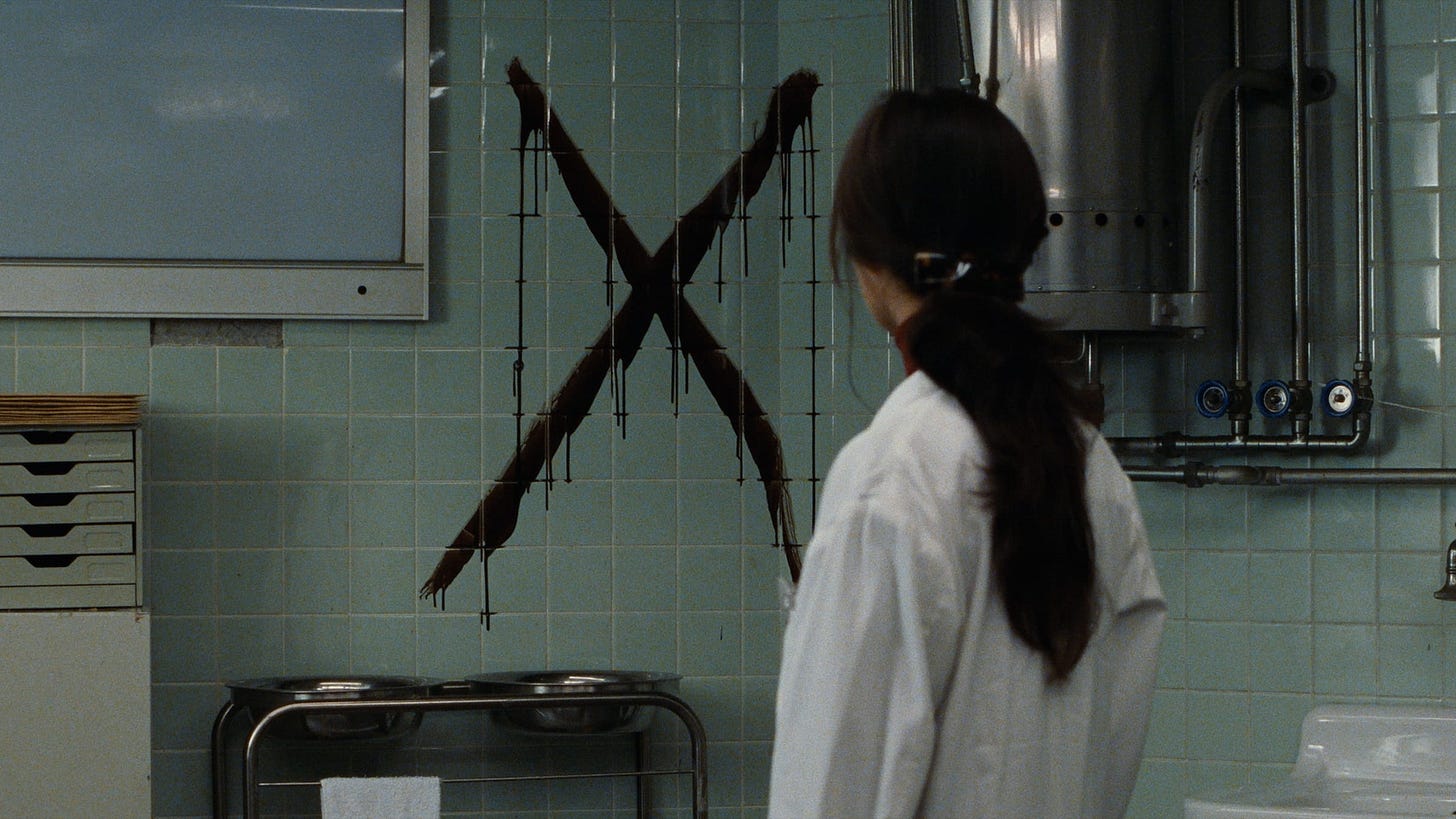I’m planning to cover more contemporary film on my blog, rather than focus on agreed-upon masterpieces that are easy to find a consensus on. This is partly for me, as recently I’ve tended to stick to certain favorites that I watch over and over again. Instead of popping Alien in again (don’t talk to me about Romulus), however, I finally crossed a big title off my personal queue- seminal 90s Japanese horror film Cure.
Procedural horror is a genre that is often ripe for digging into- The Silence of the Lambs remains one of the defining works of its time, for one, while the other seasons of True Detective have failed to stand up to its first year’s Lovecraftian influences. A recent example that comes to mind is Longlegs by Osgood Perkins, a film that caught the attention of many but left me somewhat cold (that said, I might return to it here in the future). Watching Cure has me think of why that might be.
The film involves a series of gruesome murders occurring in Tokyo, where each victim has a large X carved into their body after mutilation. Detective Kenichi Takabe struggles to find the root of these murders, while also caring for his schizophrenic wife. Takabe and his crew soon discover a common link with each of the murders- a connection to Mamiya, a man with short term memory loss. After interrogating Mamiya, he’s designated to be their man, but if you know this genre, you’d be right to assume that things are never what they appear.
Cure is lit and shot in a gorgeously economic fashion, giving us a feel for Tokyo in the late 90s while simultaneously retaining a timeless nature. The spacing is tight and dimly lit, inviting us just enough into this world to uncover Takabe’s case without overstaying its welcome. Compared to television at the time, this feels like a deliberate choice for Cure’s mise-en-scene, keeping the film unflashy yet still professional and accomplished.
The script is the real selling point, however, and I think it’s excellent work. The story is brilliantly paced and its attempts at levity are welcome while not being jarring. Kurosawa, who also wrote the film, aims for mystery above character, but still keeps the core cast refreshing and reasonably developed, as he allows the cast to prove their worth. Kōji Yakusho and Masato Hagiwara do impressive work as Takabe and Mamiya, respectively.
I didn’t intend to write about two Japanese films in a row, but the country has largely been the breeding ground for fresh, exciting artistic visions to the same extent as any other country. While he isn’t the most famous Kurosawa, Kiyoshi’s films are well worth digging into, including his recent French language films. I definitely recommend Cure to those who want a companion piece to Silence of the Lambs, Seven, or more recently, Longlegs.
Cure is currently streaming on the Criterion Channel, and has an impressive-looking release from their label.

